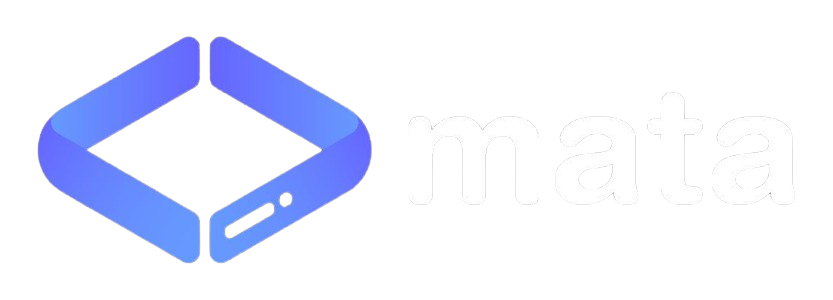With the effective use of the solution applications we recommend, the efficiency of your organization will increase and the necessary environment will be created for you to make the right decisions quickly in an increasingly competitive environment.
- Who are we ?
-
Our Solutions
Information Security Management Services
- Network Security
- Information Security Consulting
- Hotspot Solution
- Establishment of ISO 27001 Standard Infrastructure
- Personal Data Protection Services
- Logging and SIEM Solutions
- Microsoft Security Assessments
- Event Monitoring and Management Systems
- Penetration Testing Services
- End-User Security
- Database Security
Artificial Intelligence (AI) Systems
- Enterprise Software & Platform Development
- API Management and Integration Services
- Blockchain-Based Systems
- Cloud-Native Architecture and Development
- Digital Transformation-Oriented Innovation and R\&D Consulting
- Training, Support, and Transformation Consulting
- Fintech & Payment Systems Integrations
- IT Infrastructure, DevOps, and Security
- Customer Experience (CX) and User Interface (UI/UX) Design
- Internet of Things (IoT) Solutions
- Data Management, Advanced Analytics, and Business Intelligence Strategies
IT Infrastructure and Operations Services with Modern Solutions
- Maintenance & Repair Services
- Physical Security Services
- Secure Room Design & Installation
- Desktop Support Services
- MDM Solutions
- Server Support Services
- Data Center Design and Installation
- Data Center Migration Services
- Empower Your Business with Data Center Management and Storage Services
- Structured Cabling Services
IT Audit and KVKK Consultancy
- Compliance Consultancy for Law No. 5651
- Compliance Consultancy for Law No. 6698 (KVKK – Turkish Personal Data Protection Law)
- Information Technology Audit Consulting
- Pre-Audit Consultancy for ISO 22301
- ISO 27001 Pre-Audit Consultancy
- KVKK, Compliance, and Process Consulting
- Pre-Audit Consultancy for SKS
- Capital Markets Board (CMB) Pre-Audit Advisory Services
-
Our Solutions
-
Information Security Management Services
- Network Security
- Information Security Consulting
- Hotspot Solution
- Establishment of ISO 27001 Standard Infrastructure
- Personal Data Protection Services
- Logging and SIEM Solutions
- Microsoft Security Assessments
- Event Monitoring and Management Systems
- Penetration Testing Services
- End-User Security
- Database Security
-
Artificial Intelligence (AI) Systems
- Enterprise Software & Platform Development
- API Management and Integration Services
- Blockchain-Based Systems
- Cloud-Native Architecture and Development
- Digital Transformation-Oriented Innovation and R\&D Consulting
- Training, Support, and Transformation Consulting
- Fintech & Payment Systems Integrations
- IT Infrastructure, DevOps, and Security
- Customer Experience (CX) and User Interface (UI/UX) Design
- Internet of Things (IoT) Solutions
- Data Management, Advanced Analytics, and Business Intelligence Strategies
-
IT Infrastructure and Operations Services with Modern Solutions
- Maintenance & Repair Services
- Physical Security Services
- Secure Room Design & Installation
- Desktop Support Services
- MDM Solutions
- Server Support Services
- Data Center Design and Installation
- Data Center Migration Services
- Empower Your Business with Data Center Management and Storage Services
- Structured Cabling Services
-
IT Audit and KVKK Consultancy
- Compliance Consultancy for Law No. 5651
- Compliance Consultancy for Law No. 6698 (KVKK – Turkish Personal Data Protection Law)
- Information Technology Audit Consulting
- Pre-Audit Consultancy for ISO 22301
- ISO 27001 Pre-Audit Consultancy
- KVKK, Compliance, and Process Consulting
- Pre-Audit Consultancy for SKS
- Capital Markets Board (CMB) Pre-Audit Advisory Services
- Digital Transformation and Consulting Services
- Business Continuity and Risk Management Consulting
- Data Centre Server Hosting Services
- IT Consultancy Services
- IT Security Services
- Software and Support Services
- Data Protection Law Consultancy
-
Information Security Management Services
- Blog
- Communication
Latency Reduction Strategies: Optimize System Performance
 Latency Reduction Strategies: Optimize System Performance
Latency Reduction Strategies: Optimize System Performance

Latency Reduction Strategies: Optimize System Performance
By, Miraç Hicranlı
- 27th July 2024
-
9221
Latency is the time it takes for a system to respond to a request, and high latency can negatively impact user experience. Here are eight detailed strategies to reduce latency and optimize system performance:
1. Caching
Caching stores frequently accessed data temporarily, reducing database queries and speeding up response times. Caching layers can be applied at the database, application, and client levels, saving time in dynamic content generation.
Application Caching
Application caching reduces server load by caching database query results, computed data, and API calls. Tools like Memcached and Redis are commonly used for this purpose.
Browser Caching
Browser caching allows browsers to store certain files (CSS, JS, images) so they don’t need to be downloaded again, reducing load times.
2. Content Delivery Networks (CDNs)
CDNs reduce latency by serving content from the server closest to the user. This is especially important for video streaming, large file downloads, and sites with heavy graphics. Popular CDN services include Akamai, Cloudflare, and Amazon CloudFront.
3. Load Balancing
Load balancing distributes incoming traffic across multiple servers, preventing any single server from becoming overloaded. This increases performance and reduces the risk of server crashes. Load balancers can be hardware- or software-based.
4. Asynchronous Processing
Asynchronous processing allows long-running tasks to be handled in the background, improving the responsiveness of the user interface. It’s useful for tasks like sending emails and processing files.
Job Queues
Job queues handle tasks in a queue. Tools like RabbitMQ, Apache Kafka, and Amazon SQS are used for this purpose.
5. Database Indexing
Database indexing improves query performance. Indexes are created on specific columns in a database to speed up data retrieval. However, excessive indexing can reduce performance during database updates.
Types of Indexes
- B-Trees: General-purpose indexes.
- Hash Indexes: Suitable for equality searches.
- Full-Text Indexes: Used for text searches.
6. Data Compression
Data compression reduces the size of data for faster transmission. This lowers storage costs and speeds up network data transfer. Common compression algorithms include Gzip and Brotli.
7. Pre-caching
Pre-caching loads data that users are likely to need in advance. This is especially useful for mobile applications and reducing page load times. Analyzing user behavior can determine what data to pre-cache.
8. Keep-Alive Connections
Keep-alive connections reuse TCP connections, eliminating the need to establish a new connection for each request. This significantly improves performance, especially with HTTP/2.
Advantages of HTTP/2
- Multiplexing: Multiple requests/responses can be processed simultaneously.
- Header Compression: Compressing HTTP headers reduces data size.
- Server Push: Servers can send resources to clients before they are requested.
By integrating these strategies into your systems, you can improve performance and provide a faster and more efficient experience for your users.





